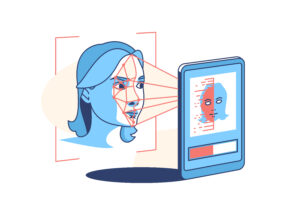Introduction to text detection
Text detection is a process of identiying text in images and videos. It is widely used in applications such as optical character recognition, document layout analysis, and video captioning. There are many different methods for text detection, but ensemble methods have been shown to be particularly effective.
Ensemble methods involve combining the predictions of multiple models. This can be done by training each model on a different subset of the data, or by using a different algorithm altogether. Ensembles usually outperform individual models, as they are able to capture a wider range of patterns.
There are many different ensemble methods, but some of the most popular are bagging and boosting. Bagging involves training each model in the ensemble independently, then averaging the predictions. Boosting involves training each model sequentially, with each model correcting the errors of the previous one.
No matter which method you use, ensembles will usually improve the accuracy of your text detection models. If you’re looking to achieve state-of-the-art results, ensembles are definitely worth considering!
The importance of accuracy
In recent years, text detection has become an important topic in the field of computer vision. With the advent of deep learning, there have been many successful text detectors proposed. However, most of these detectors are based on single models and lack robustness. This is due to the fact that deep neural networks are susceptible to overfitting on small datasets.
Ensemble methods are a powerful tool for improving the accuracy of deep learning models. By training multiple models and combining their predictions, ensemble methods can reduce overfitting and improve generalization. In this blog post, we will explore how ensemble methods can be used to improve text detection accuracy.
We will first train a simple convolutional neural network (CNN) for text detection. We will then show how an ensemble of CNNs can be used to improve accuracy. Finally, we will compare the results of our CNN ensemble with a state-of-the-art text detector.
How ensemble methods can help
Ensemble methods are powerful machine learning techniques that can be used to improve the accuracy of text detection models. By combining the predictions of multiple models, ensemble methods can reduce the error rate of text detection systems.
Ensemble methods are particularly well suited for text detection applications because they can exploit the different strengths of different models. For example, if one model is better at detecting horizontal text and another model is better at detecting vertical text, then an ensemble containing both models will be more accurate than either model alone.
There are many different types of ensemble methods, but all share the same basic principle: they combine the predictions of multiple models to make a final prediction. Some popular ensemble methods for text detection include bagging, boosting, and stacking.
Bagging is a simple ensemble method that involves training multiple models on different subsets of the data and then averaging their predictions. Boosting is a more sophisticated approach that involves training multiple models sequentially, each model correcting the errors of the previous model. Stacking is an advanced technique that combines the predictions of multiple models using a second-level machine learning model.
Ensemble methods can provide significant improvements in accuracy over traditional single-model approaches. In some cases, ensembles have been shown to outperform state-of-the-art deep learning models. If you’re working on a text detection project, consider using an ensemble approach to improve your results.
Case study: comparing text detection methods
There are many different methods for detecting text in images, and each has its own advantages and disadvantages. In this case study, we will compare three different methods:
1. The first method is based on the traditional approach of using a sliding window to scan an image for text. This method is fast but often misses text that is not horizontally aligned.
2. The second method uses a connected component analysis to detect text. This method is more accurate but can be slow on large images.
3. The third method combines the strengths of the previous two methods by using a sliding window to quickly scan the image for text, and then using connected component analysis to accurately locate any text that was missed. This hybrid approach is more accurate than either of the individual methods and also much faster than the connected component analysis alone.
In this case study, we will use a sample image of street signs to compare the accuracy and speed of these three methods. The sample image is shown below:
Conclusion
In conclusion, ensemble methods can be a powerful tool for improving text detection accuracy. By combining multiple algorithms and data sources, we can achieve better performance than using any single approach alone. Furthermore, these techniques are relatively simple to implement and can be deployed in many types of applications. With the right selection of models and data sources, it is possible to drastically improve the accuracy of text detection systems with minimal effort.






